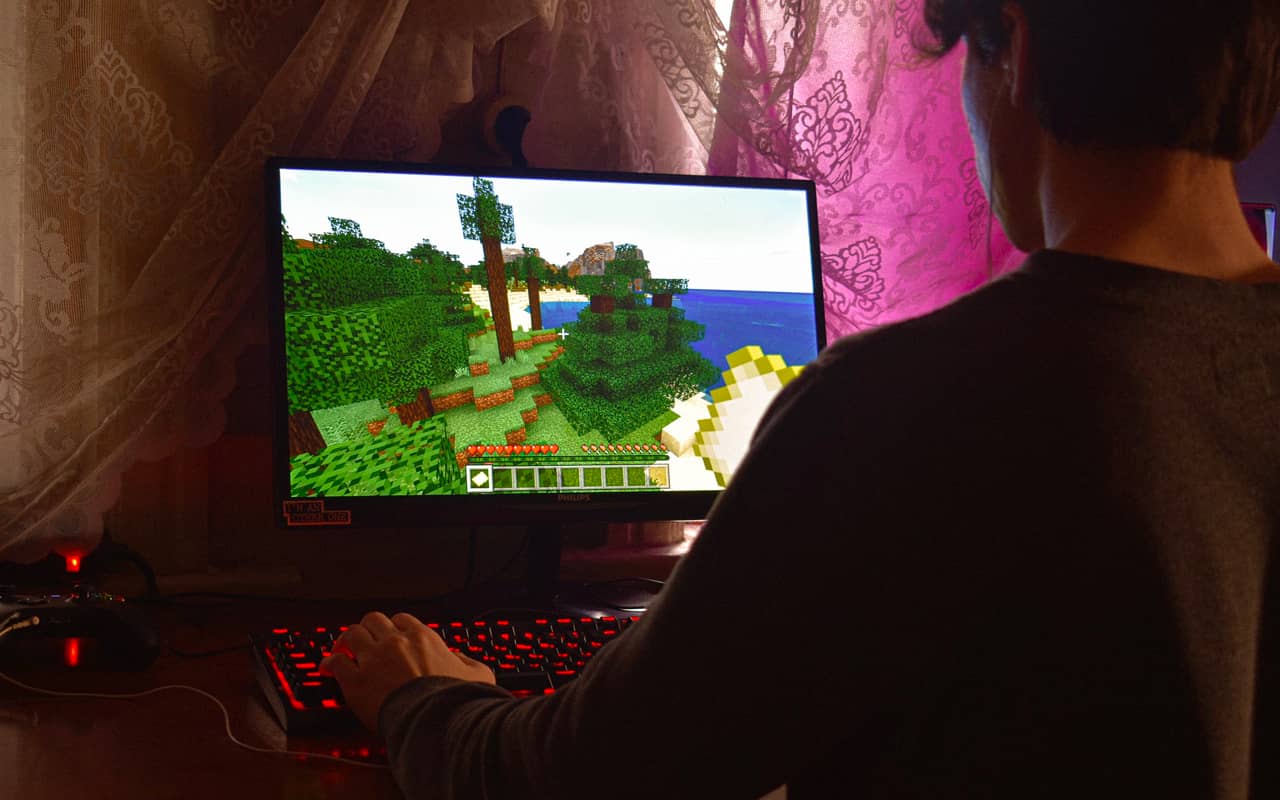 People say that children are demanding students. But with so many adult learning styles out there, mature students might be even tougher.
People say that children are demanding students. But with so many adult learning styles out there, mature students might be even tougher.
And that’s why you’re here.
You’re learning as an adult and wondering why you struggle.
Or you’re teaching adult learners and trying to help them push through their barriers.
Here’s the very good news:
Figuring out the best learning techniques for adults isn’t rocket science.
And on this page, I’ll discuss a bunch of them.
That way, if you’re an adult struggling to learn, you’ll do much better.
And if you’re teaching adults, you’ll succeed a lot more often.
Oh, and you know what?
All of us struggle to learn from time to time.
We’ll talk about dealing with those issues too.
Let’s dive in.
The 4 Main Adult Learning Styles
The first problem we have to tackle is that some researchers don’t agree that there is any such thing as a “learning style.”
For example, an article in the Atlantic completely debunked the idea that some people are “visual learners.” Another scientific study demonstrated that believing you have a learning style may be detrimental to your progress.
You know what?
They’re both right.
All learners are visual learners. Even the brains of blind people show visual activity when accessing certain kinds of thoughts. And if you can hear, you can learn from what you’re hearing – especially when echoic memory gets involved.
But when we think about the different ways adults learn, we’re not talking about universal categories like visual, auditory, kinesthetic or the other senses.
Rather, we’re talking about busy professionals who face demands that children don’t have. As Jim Teeters and Lynne Hodges show in Teach with Style: Creative Tactics for Adult Learning, busy adults want to know:
- Why do I have to learn this?
- Why are you the one best suited for teaching me?
- Why do you care about my success?
- How are you going to hold my interest?
These categories do represent different ways adults learn very well.
Let’s dig even deeper.
One: The What Learner
A lot of people feel that they can’t start learning unless they know what something is in all its dimensions.
That’s problematic.
Why?
Because the whole reason we start learning something is to explore those dimensions.
When it comes to different learning styles for adults, it’s important to realize when you’re getting hung up on something.
Then develop strategies for this learning style.
When I find myself stopped dead in my tracks because I don’t know what something is, I will:
- Look up key terms
- Memorize them (typically using a Memory Palace)
- Read the introduction and conclusion of a book
- Keep moving forward
- Try to get my hands dirty
For example, I work a lot on the Internet and use multiple online programs like Google Analytics.
There were tons of things I had to learn when using Google Tag Manager.
To this day, I’m still not sure I understand what half of what I’ve learned is really all about.
However, I suppressed the need to know the definition of everything, took a course and followed the steps.
Now, when I need to, I can use Google Tag Manager with relative ease. Or if I need to ask a tech person for help, I at least know how to describe what I’m asking for.
I’m able to do so thanks to what some learning scientists call “active learning.” Another way of putting that term is that you’ve taken control over your own learning without waiting to understand it all.
This is very important because active learning helps you reach active recall later. This is a name for a special process that helps you form memories faster.
Two: The How Learner
Whereas the what learner tends to get hung up on definitions and dimensions, the how learner wants to know all about the working parts.
For example, I have many students in the Magnetic Memory Method Masterclass who feel they cannot proceed without knowing how the brain stores memories.
Of course, I’m very happy to tell them all about:
… and much more.
The problem is that all of these types of memory are descriptions. They are our best guess at how memory works.
But we ultimately don’t really know. We don’t even know how the brain creates the experience of consciousness.
If you’re hung up on knowing how things work, you might want to create a visual model of the working parts.
This can at least help you see what might be at play in a process. Alexandra Golon makes this point in Visual-Spatial Learners: Differentiation Strategies for Creating a Successful Classroom. She points out that doing so can also improve your organizational skills.
I would add specific strategies like mind mapping for visualizing how things work.
Three: The Why Learner
Have you ever wanted to learn a language and felt blocked because you didn’t know why certain things were so different from your mother tongue?
The Psychology of the Language Learner makes a great point about why this happens.
First, the book argues that a better term for “learning style” would be “cognitive strategy.”
Second, she points out that some people are more verbal, whereas others tend to think in terms of images.
If you find that you tend to reason through things verbally, and this creates your block, consider trying to visualize instead.
And when no one knows why something works, you can give yourself permission to carry on by imagining a giant god in the sky saying, “It works that way because that’s the way it works.”
Four: The “Just Give Me The Steps” Learner
If you’ve ever bought a new device and went straight for the numbered steps for setting it up without reading the introduction or information about the safety requirements, you might be this kind of adult learner.
There’s nothing wrong with it.
But if you find yourself getting frustrated, it’s because you’re missing context.
I’ve been like this a lot, especially when I was a kid.
My brother used to win all of the video games. And a huge part of the reason why is that he read the instruction books carefully and followed up by reading the gaming magazines.
Whenever I find myself racing forward without enough context to follow a bunch of steps, I think of my brother’s success and correct course.
How Do Adults Learn Best?
The four categories we’ve just discussed aren’t fixed.
You might find yourself (or your students) slipping out of them at various times.
So when it comes to the best ways for adults to learn, I think we need to change the question:
How aware is the learner:
- The different styles?
- When they shift in and out of them?
- Strategies they have for getting past their obstacles with each style?
These questions are really important because they create powerful reflective thinking that leads you towards substantial accomplishments at any age.
With that in mind, all adults would do well to create a diversity of skills-based learning over time.
When learning something new, consider peppering the experience with skills and topics that embrace:
- Numeracy skills
- Reading
- Technological literacy
- Physical capabilities
- Music
- Writing
- Discussion
- Language learning
Why?
Because continuing to develop all of these skills will help you as a lifelong learner continue to contribute to others.
It’s in our relationships and what we give that matters above all. Learning is always best when it orients towards giving rather than taking.
This was precisely the conclusion found by the authors of Adult Competencies for Lifelong Learning. Those who learn so that they can contribute to others report leading much more fulfilling lives than those who do not.
There Are Many Different Ways Adults Learn
As I hope to have shown today, learning techniques for adults aren’t nearly as important as removing the barriers created by the different learning styles.
At the end of the day, we all face two choices:
I encourage all people to explore the latter.
My favorite of all learning strategies is especially strong for adults. It’s called the Memory Palace technique and you can take a free course on how to use it to remember anything here:
Why is it such a great learning strategy for adults?
The answer is simple:
The technique draws upon your personal experiences.
It helps you connect things you don’t yet know with things you already do know.
And as adults, that means we usually have tons of references.
The best part?
This technique also gives you great brain exercise, something all adults need.
So what do you say?
Are you ready to think more about your style as an adult learner?
Which styles have helped you or hindered you?
Related Posts
- Stoic Secrets For Using Memory Techniques With Language Learning
Christopher Huff shares his Stoic secrets for using memory techniques when learning a language. You'll…
- The German Professor Who Defends Memory Techniques for Language Learning
This professor defends memorization techniques for learning foreign languages and has the science to prove…
- Why They Don't Teach Learning And Memory Techniques In Schools
If you're looking for information about learning and memory techniques and wonder why on earth…









